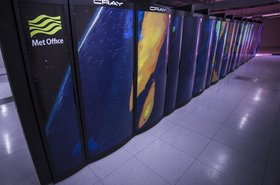Loughborough University has unveiled its new supercomputer in Leicestershire, UK.
The new £1.1 million ($2.8m) system, designed by OCF, features 58 Lenovo SD530 compute nodes and 2,230 cores, three dedicated GPGPU nodes each with dual NVIDIA Tesla V100 GPU’s and two high memory visualization nodes, connected via Mellanox HDR100 InfiniBand fast networking and backed by 800TB of Lenovo DSS-G Storage which uses the IBM Spectrum Scale FileSystem.
Named after the English mathematician Ada Lovelace, the new system replaces Hydra, which was introduced in 2010, and consumes roughly half the electricity of its predecessor whilst delivering three to four times the output.
“As one of the country’s top 10 research-led universities, there are approximately 100 academic papers per year connected to the use of the University HPC facilities,” said Matthew Cook, assistant director of infrastructure and operations. “We therefore need an HPC service that gives us the ability to change scientific methodology quickly rather than waiting for it to compute. Which was becoming a problem with Hydra.”
Lovelace will be used for projects including motorsport aerodynamics, quantum physics, battery modeling, and fluid dynamics. It is housed on campus and already fully installed and operational.
“We conduct ground-breaking research including testing for next-generation design of battery, solar and nuclear materials, as well as more far-reaching applications such as modeling fingerprint development reagents and their reactions with surfaces,” said Dr. Pooja Goddard, senior lecturer in Chemistry at Loughborough. “Having a high-spec facility like Lovelace allows us to perform cutting-edge simulations putting us at the forefront of materials modeling research.



